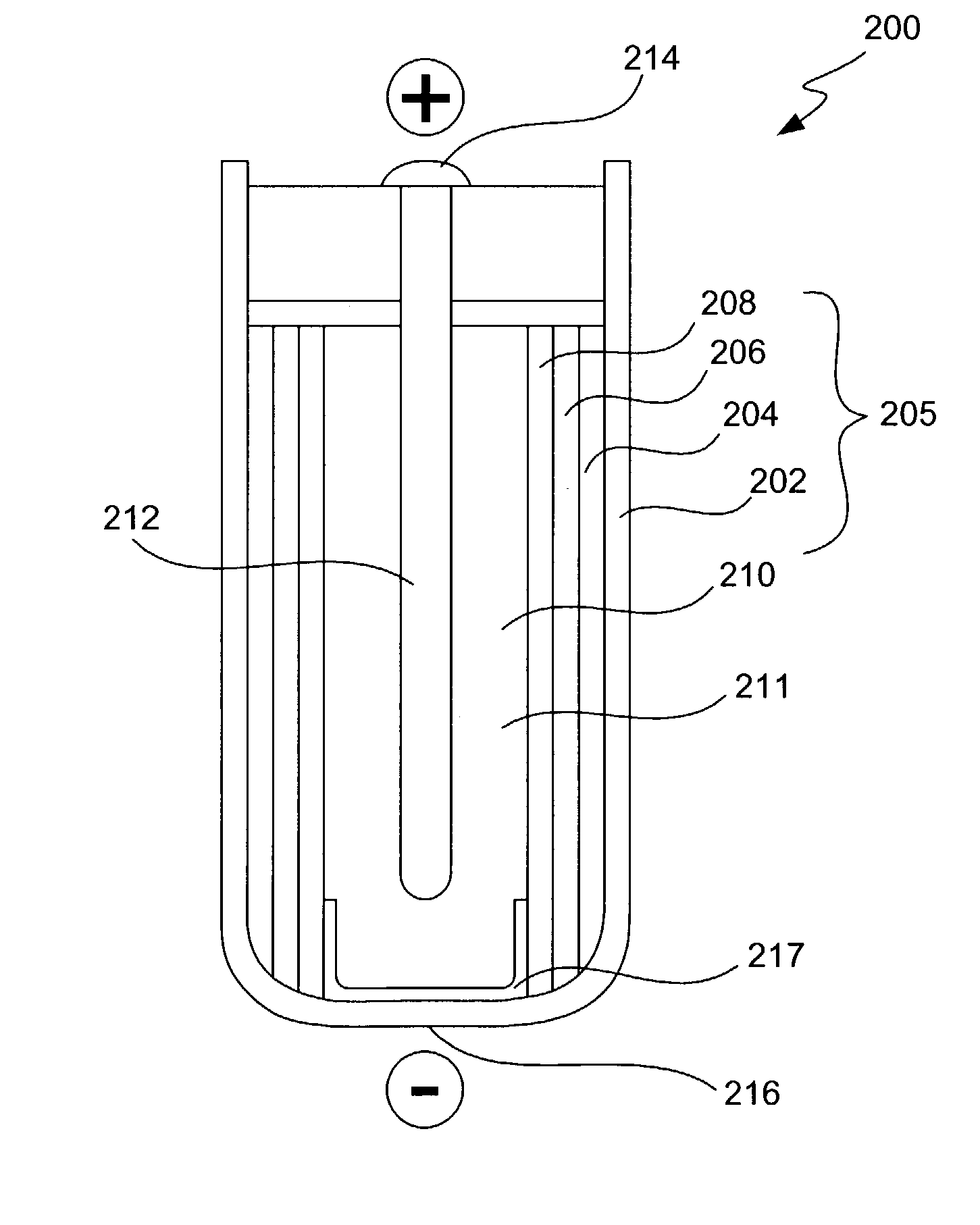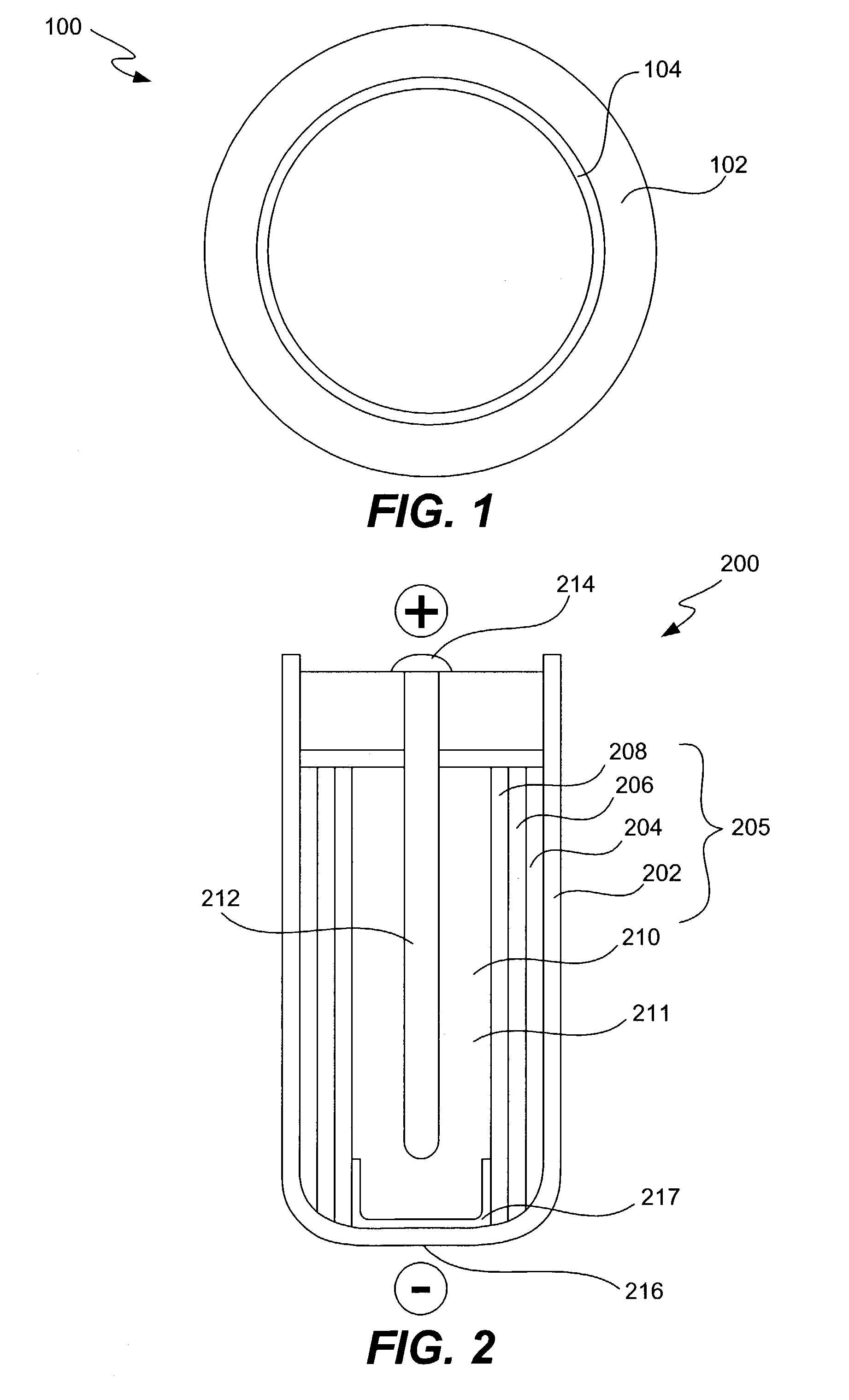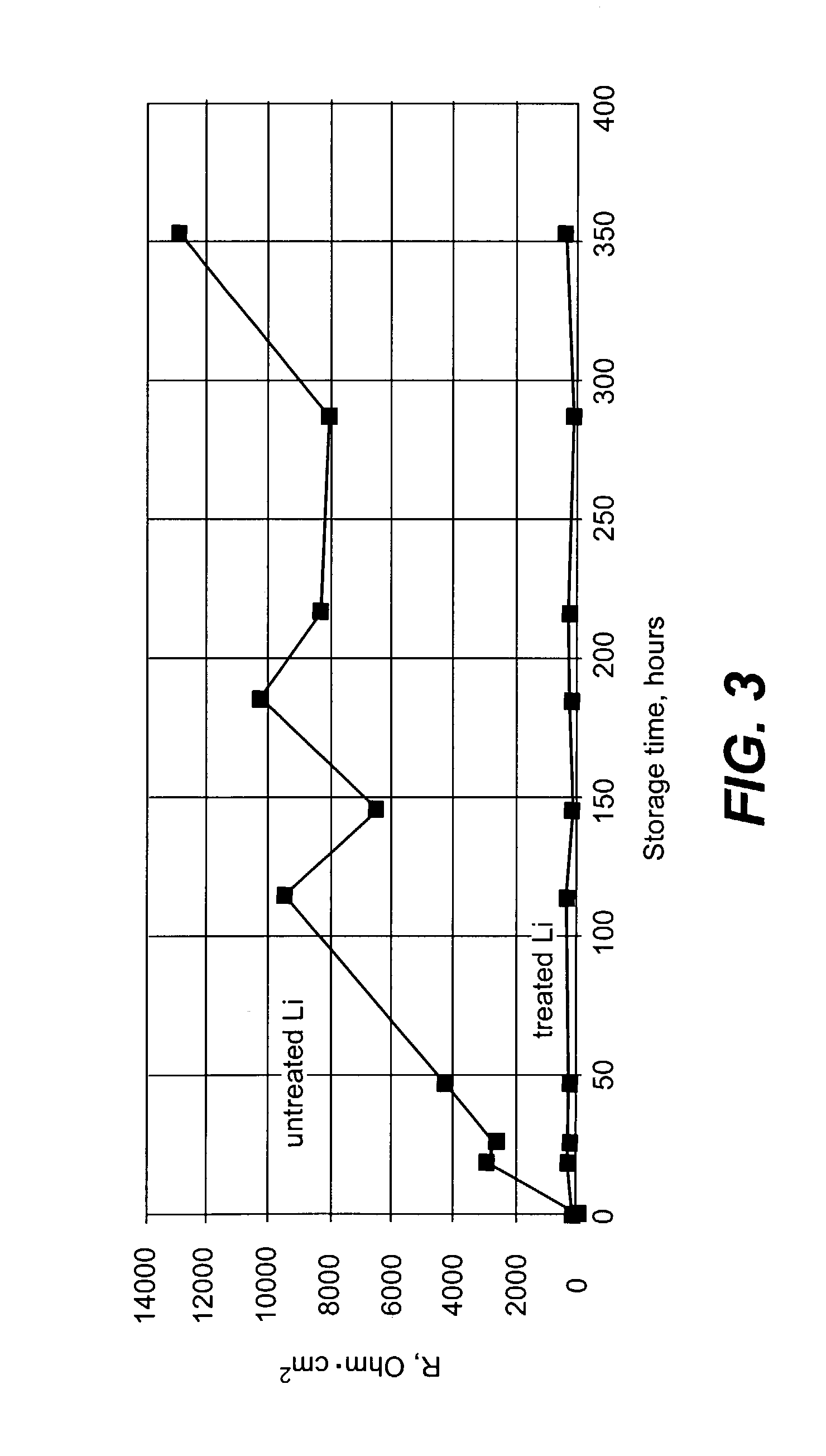Alleviation of voltage delay in lithium-liquid depolarizer/electrolyte solvent battery cells
a lithium-liquid depolarizer/electrolyte solvent and battery cell technology, applied in the direction of secondary cells, cell components, non-aqueous electrolyte cells, etc., can solve the problems of additional mobile ionic point defects in the crystalline lattice, and achieve the reduction of voltage delay, significantly reduced or completely alleviated, and improved stability toward the electrolyte
- Summary
- Abstract
- Description
- Claims
- Application Information
AI Technical Summary
Benefits of technology
Problems solved by technology
Method used
Image
Examples
example 1
Comparison of Surface Impedance for Protected and Unprotected Li Anodes
[0060]A Li electrode surface (125 micron foil from Cyprus Foote Mineral Company) was treated with dry DME containing 1500 ppm of anhydrous phosphoric acid and 200 ppm of concentrated sulfuric acid (96-98%). Just before treatment, the Li surface was polished with Tyvec fabric (1509 B). Surface treatment was conducted by dipping of the Li electrode having surface area of about 2.0 cm2 into a 20 ml flask filled with the acid containing solution. Duration of the treatment was two minutes. After the Li surface reaction with acids and formation of a protective layer, the Li surface was rinsed with pure dry DME and dried. All described operations were conducted in Ar-filled glove box.
[0061]Electrochemical measurements were performed in 4-electrode glass cells containing a Li working electrode placed between two porous carbon counter electrodes. A Li wire located close (about 1 mm) to the surface of the working electrode...
example 2
Comparison of Discharge Voltage vs. Time for Protected and Unprotected Li Anodes
[0064]Electrochemical cells containing the Li chemically treated in the mixture of phosphoric and sulfuric acids dissolved in dry DME as described above in Example 1, were assembled and discharged at a current density of 0.5 mA / cm after storage at OCP for 11 days. The cell electrolyte was 1.5 M LiAlCl4 in SOCl2. Similar cells having untreated Li electrodes were discharged simultaneously. The results were plotted in FIG. 4. As can be seen, the cell with pretreated Li electrode demonstrates a flat discharge voltage vs. time profile without visible voltage depression. In contrast, the discharge curve for the conventional Li electrode has a significant voltage delay with a voltage recovery time of several tens of minutes. This data indicates that the phenomenon of voltage delay can be completely eliminated or at least significantly reduced in lithium thionyl chloride batteries by using chemically produced pr...
example 3
Corrosion Testing
[0065]The electrochemical cells containing Li chemically treated in the mixture of phosphoric and sulfuric acids dissolved in dry DME as described in Example 1, and similar cells with untreated Li anode were assembled. The cell electrolyte was 1.5 M LiAlCl4 in SOCl2 with addition of 0.5 M of AlCl3. After storage overnight the part of untreated Li electrode immersed in the electrolyte was completely dissolved due to corrosion. In contrast, the surface of the treated Li electrode appeared unchanged. In addition, the treated electrode had similar values of interface impedance (in accordance with the procedure described in Example 1) before and after cell storage. This data indicates that Li electrodes chemically treated with acids in accordance with the present invention exhibit improved stability towards highly corrosive electrolytes containing AlCl3.
PUM
| Property | Measurement | Unit |
|---|---|---|
| discharge voltage | aaaaa | aaaaa |
| solubility | aaaaa | aaaaa |
| solubility | aaaaa | aaaaa |
Abstract
Description
Claims
Application Information
 Login to View More
Login to View More - R&D
- Intellectual Property
- Life Sciences
- Materials
- Tech Scout
- Unparalleled Data Quality
- Higher Quality Content
- 60% Fewer Hallucinations
Browse by: Latest US Patents, China's latest patents, Technical Efficacy Thesaurus, Application Domain, Technology Topic, Popular Technical Reports.
© 2025 PatSnap. All rights reserved.Legal|Privacy policy|Modern Slavery Act Transparency Statement|Sitemap|About US| Contact US: help@patsnap.com



